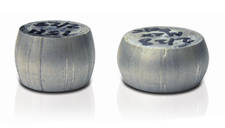
Reviewing and managing potential variables is critical in compression testing, because specimens will behave differently when even the subtlest variable is introduced. To manage this variability and improve the accuracy of results, here are six tips to help you ensure data consistency test after test.
1. Document the details
It is well worth the time spent to record all the details about a test setup. How the specimen is mounted, what interfaces are used, and the actuation technology are just some of the variables that can affect test outcomes. So can the number of hours a specimen waits before being tested, as well as running the same test in summer months versus winter months due to the varying lab temperatures and humidity levels. And what about those big, beautiful west-facing windows? They can easily result in different test values in the afternoon, compared to the morning.
2. Get alignment as close to perfect as possible
Very few compression tests involve specimens that are perfectly round or square. Poor control of specimen and grip angularity and concentricity means that compression tests are not pushing in the center of the specimen, nor are they pushing straight down on specimen ends. Unequal specimen lengths and widths are the norm, which makes test system alignment critically important to support repeatable testing and produce consistent test data. For example, cylindrical test specimens want to buckle inconsistently when compressed — and if a test system is even slightly out of alignment, the compressed specimen may look more like a leaning tower and less like a hockey puck. Paying close attention to alignment before testing will help keep throughput high.
3. Fixate on the fixtures
Grips, platens and fixtures come in direct contact with the specimen throughout a test. If they are not suited to a specific application or exhibit premature wear due to poor quality, they will introduce variability that will ultimately impact throughput. If the fixture changes, so will your test data. Therefore, it is essential to pay close attention to the fixtures for each test, and to periodically inspect all grips, platens and fixtures in your test lab. Using only the highest-quality accessories is a wise investment that will quickly pay for itself.
4. Think about your transducer technology
Measuring force and displacement is a challenge in compression testing, because the measurement device has a tendency to literally get in the way and become part of the test. On top of undermining test data fidelity, this phenomenon can destroy expensive measurement devices. What is the best way of getting good data without sacrificing transducers? Noncontact extensometers are a popular workaround. It is also important to have a simple and effective process for periodic transducer validation.
5. Employ smart data acquisition
Many compression tests begin in a linear fashion but become nonlinear as a specimen begins to crush, crinkle or yield. If your data acquisition rate is less than sufficient, you might miss this important transition when trying to determine bend or compressive yield, for example. Combining “level crossing” and “timed” data acquisition may provide superior results.
6. Automate
Quality testing is all about speed, consistency and repeatability. Therefore, the more you can remove human intervention and human hands from the process, the better. That extends all the way to how captured data is uploaded and saved into a network database.
Although it is difficult to be mindful of every variable at play, consistency must always be the ultimate objective for your test lab. The points above represent some of the key items to consider in the interest of getting and keeping variability out of your compression testing. Spending a bit of time on these tasks up front will save you much more time — and increase uptime — in the long run.
Contact MTS today to learn more about taking variability out of your testing.

